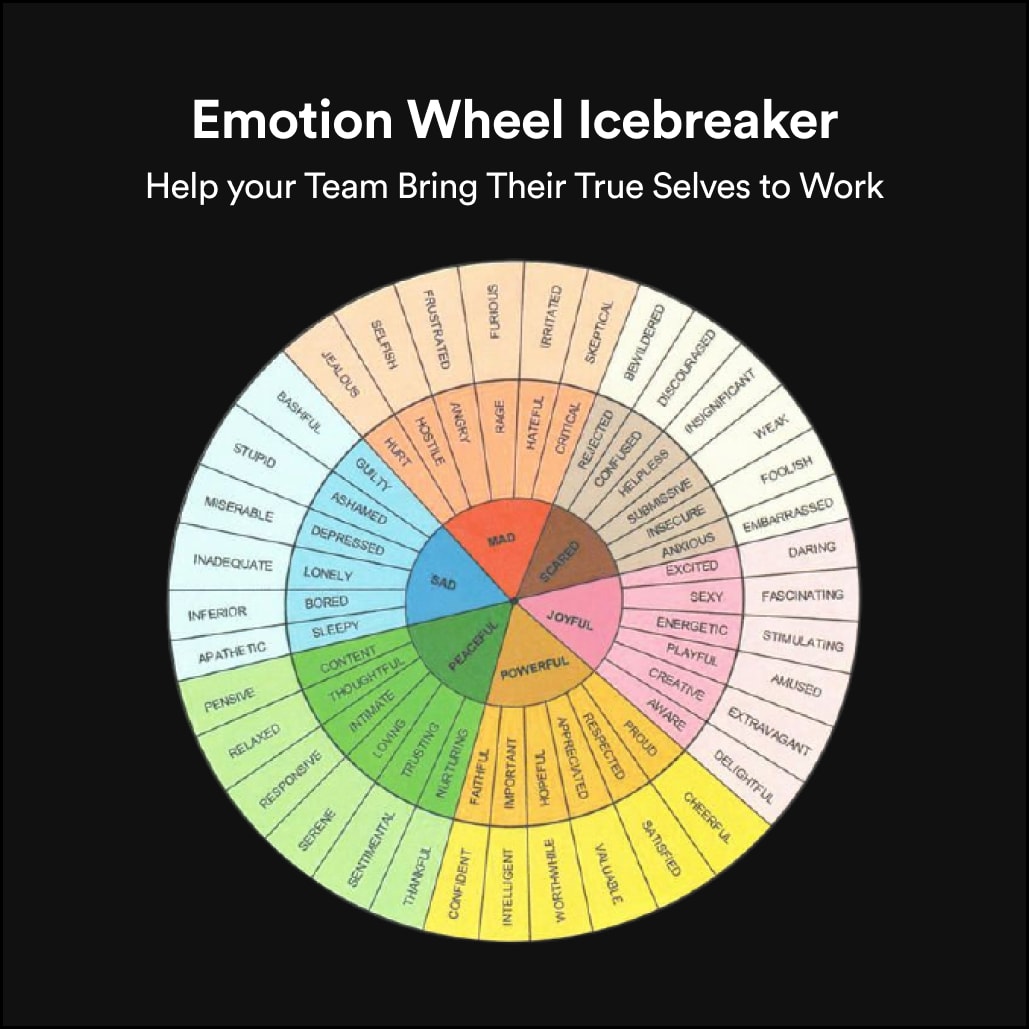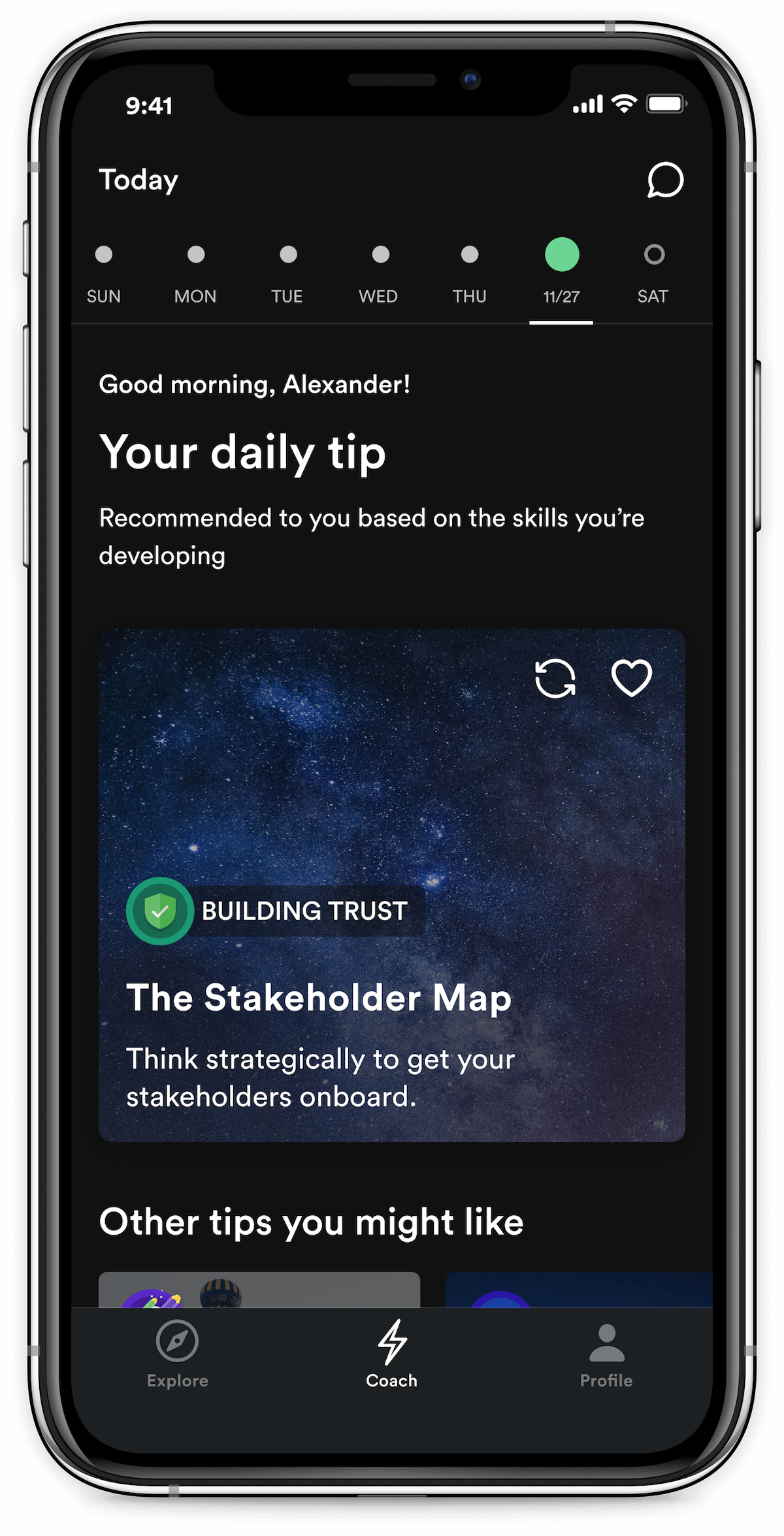Help your Team Bring Their True Selves to Work
Build empathy in your team with the emotion wheel icebreaker.

Inspired by:
Anya Dvornikova, Learning Design Program Lead at Miro

Help your Team Bring Their True Selves to Work
We’re often told that feelings don't belong in the workplace, but keeping them bottled up can lead to unnecessary conflict and misunderstandings.
For example, we might feel distracted at work due to stress from personal issues (like a conflict with a significant other), causing us to make mistakes. Without the context, it's common for people to react negatively, but by being open about what's going on you can avert a bigger conflict.
The Emotions Wheel Icebreaker provides a setting for your team to share their feelings and bring more compassion into your team. Here's how it works...
Step 1: Set the tone 🎵
Take 10-15 mins at the start of a meeting and share the emotions wheel with your team via a virtual whiteboarding tool like Miro (find a template in the deep-dive section).
Then set the tone by saying something like: "With everyone working remotely, it's even more important to be intentional and proactive in expressing our emotions, because we don't get as much context through slack and zoom."
If this exercise seems too heavy at first for your team, choose something more light-hearted like sharing a gif to represent how you feel.
Step 2: Silently add emotions 🗳️
Now your team understands the purpose, ask them to pick a color dot and place it on the wheel based on how they’re feeling. They can add more than one.
You can turn off cursors and screen share to help your team feel safe in truly expressing how they feel. Remind everyone that there will be a chance to discuss how they’re feeling shortly afterwards, but only if they feel comfortable.
Step 3: Discuss the why 💬
First, thank everyone for sharing their feelings - this is already a big step. You can then:
• Point out clusters on the wheel and ask if anyone who placed their dot in those groups would like to share why. • Open the floor for anyone who wants to share. • Alternatively, people can write down on a virtual sticky note how they feel and why, if they feel more comfortable that way.
If most of the feelings are sad, mad or scared. It’s good to have a plan B. Suggest breaking off into smaller groups instead and talk it out.
Step 4: Provide a chance to follow-up 🤲
After the exercise, give time for feedback and discussion. Encourage people to follow-up with you regarding how the exercise went or specific issues that they wanted to bring up in private.
Secondly, use the information as a chance to adapt your behaviors and encourage your team to do the same. For example, if you don’t do this already, before giving critical feedback or increasing someone’s workload, proactively check in with how they feel and what’s causing those feelings.
Building a more compassionate team
The point of the Emotional Wheel Icebreaker is to show that it’s okay to truthfully express yourself at work. This won’t happen overnight, but by leading by example and repeating exercises like this enough, you’ll find yourself with a more compassionate team that has each other's back through the hard times.

Become a world-class leader in two minutes a day